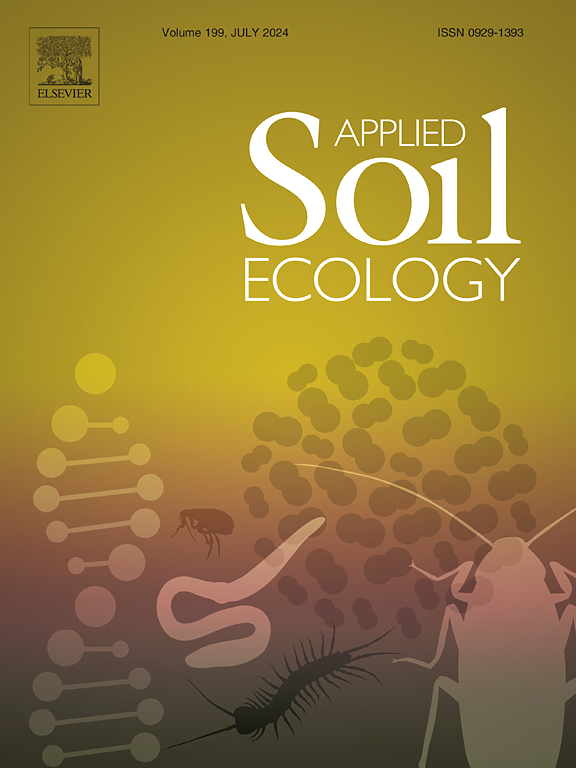Profiling of farmland microorganisms in maize and minor-grain crops under extreme drought conditions
IF 4.8
2区 农林科学
Q1 SOIL SCIENCE
引用次数: 0
Abstract
Soil microorganisms are ubiquitous in farmland, however, knowledge regarding the drought resistance of minor grain crops from the perspective of root-associated microbial communities is still poorly understood. We investigated the composition, diversity, co-occurrence network, and assembly process of bacterial and fungal communities in rhizosphere and root of sorghum, broomcorn millet, and foxtail millet under extreme drought conditions, with widely planted maize as the control. These results showed that Firmicutes and Proteobacteria were enriched in rhizosphere and root of broomcorn millet, respectively, and the relative abundances of Sordariomycetes and Eurotiomycetes, and bacterial alpha diversity in rhizosphere and root of sorghum were the larger than those of the other three crops, which was attribute to the lowest contents of organic matter (OM) and total nitrogen (TN). The bacterial network of broomcorn millet and fungal network of foxtail millet were more complex than those of maize, showing higher nodes, edges, density, and average degree. The NTI values of bacterial community in rhizosphere and root of broomcorn millet were greater than those of maize, indicating broomcorn millet had closer phylogenetic relationships. This study revealed the significant advantages of planting minor-grain crops from the perspectives of microorganisms under extreme drought conditions, which can be used to optimize the planting management strategies of farmland.
极端干旱条件下玉米和小粒谷物作物中农田微生物的特征分析
土壤微生物在农田中无处不在,然而,从根相关微生物群落的角度来看,人们对小宗粮食作物的抗旱性仍然知之甚少。我们以广泛种植的玉米为对照,研究了极端干旱条件下高粱、扫帚粟和狐尾粟根圈和根部细菌和真菌群落的组成、多样性、共生网络和组装过程。结果表明,高粱根圈和根部分别富集了固着菌和蛋白菌,高粱根圈和根部的尾孢菌属和欧顶孢菌属的相对丰度以及细菌的α-多样性均大于其他三种作物,这与高粱根圈和根部的有机质(OM)和总氮(TN)含量最低有关。黍的细菌网络和狐尾黍的真菌网络比玉米的复杂,显示出更高的节点、边缘、密度和平均度。肉角粟根圈和根部细菌群落的 NTI 值均大于玉米,表明肉角粟的系统发育关系更为密切。该研究从微生物角度揭示了极端干旱条件下种植小杂粮作物的显著优势,可用于优化农田种植管理策略。
本文章由计算机程序翻译,如有差异,请以英文原文为准。
求助全文
约1分钟内获得全文
求助全文
来源期刊

Applied Soil Ecology
农林科学-土壤科学
CiteScore
9.70
自引率
4.20%
发文量
363
审稿时长
5.3 months
期刊介绍:
Applied Soil Ecology addresses the role of soil organisms and their interactions in relation to: sustainability and productivity, nutrient cycling and other soil processes, the maintenance of soil functions, the impact of human activities on soil ecosystems and bio(techno)logical control of soil-inhabiting pests, diseases and weeds.
 求助内容:
求助内容: 应助结果提醒方式:
应助结果提醒方式:


